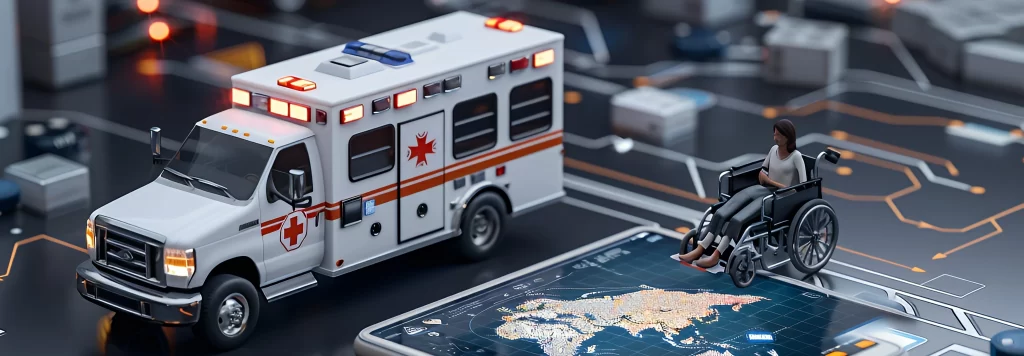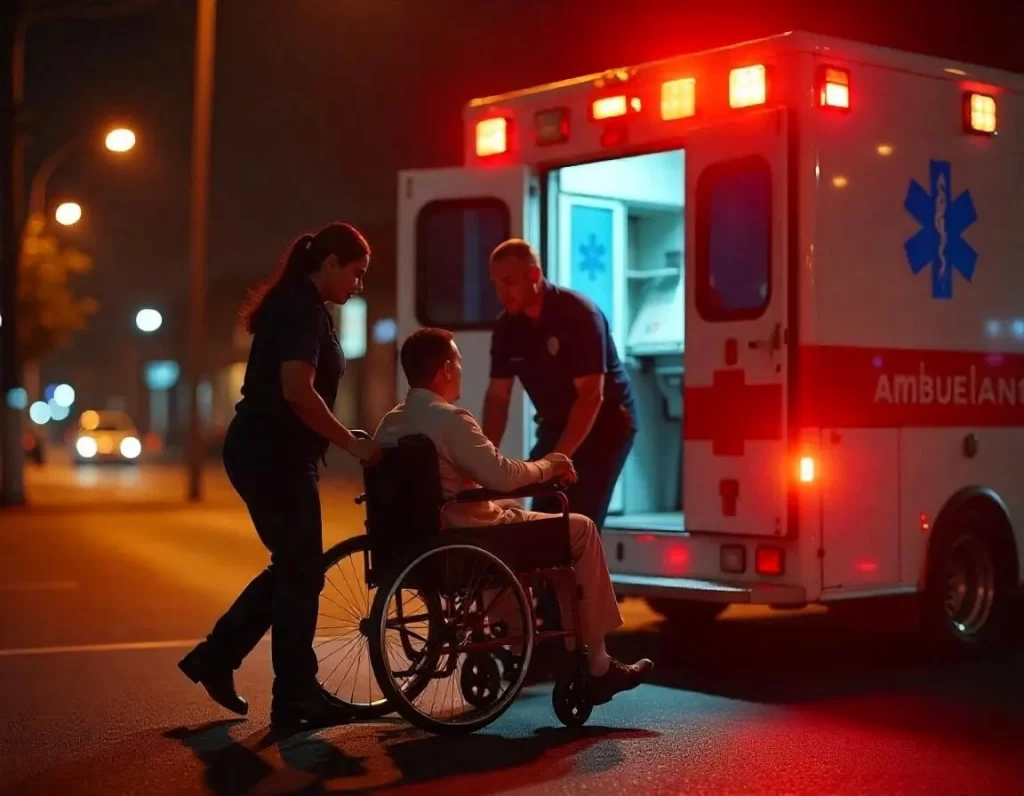The Importance of Advanced Life Support for Pediatric Patients
When it comes to pediatric care, the difference between life and death often hinges on the timely and expert application of medical interventions. In life-threatening situations, such as cardiac arrest, severe trauma, or respiratory distress, Advanced Life Support (ALS) plays a pivotal role in stabilizing young patients and increasing their chances of survival. However, providing ALS for pediatric patients is a highly specialized task that requires not only knowledge and skills but also an understanding of the unique physiological needs of children. This blog post explores the significance of ALS in pediatric emergencies, the challenges healthcare providers face, and why proper training is critical to saving lives.What is Advanced Life Support?
Advanced Life Support (ALS) is a set of medical procedures used to treat patients with life-threatening conditions. It involves advanced techniques such as advanced airway management (e.g., intubation), medication administration, defibrillation, and monitoring vital signs. ALS is distinct from Basic Life Support (BLS), which involves more fundamental techniques such as CPR, chest compressions, and using an Automated External Defibrillator (AED). In pediatric care, ALS extends to the management of critical emergencies like cardiac arrest, respiratory failure, severe trauma, and shock. ALS for children requires specific adaptations to account for their anatomical and physiological differences from adults.What is Pediatric Advanced Life Support (PALS)?
Pediatric Advanced Life Support (PALS) is a specialized certification program designed for healthcare providers who work with children in emergency settings. The course, developed by the American Heart Association (AHA), teaches advanced life support techniques tailored to pediatric patients, covering topics such as pediatric assessment, airway management, resuscitation, and the treatment of pediatric arrhythmias.Importance of PALS Training
PALS training is critical because it ensures healthcare providers are equipped with the necessary skills to manage pediatric emergencies effectively. Key elements of PALS training include:- Airway and Breathing Management: Learning how to properly secure a child’s airway and manage respiratory failure.
- Cardiac Arrest Management: Understanding the differences in pediatric CPR and defibrillation compared to adults.
- Pharmacology: Knowing which drugs to administer in various emergencies and the correct dosages based on a child’s weight.
- Teamwork and Communication: Emphasizing the importance of coordinated efforts in a high-stress environment.
Key Components of Pediatric Advanced Life Support
ALS for pediatric patients incorporates several core components that must be adapted based on the child’s age and size.- Airway Management
- Intubation in children requires different techniques than in adults due to differences in airway anatomy. Intubation equipment must be appropriately sized, and intubation depth must be carefully calculated.
- Supraglottic airway devices may be used in children to ensure proper ventilation, though intubation is often preferred for children in critical conditions.
- Bag-mask ventilation techniques are also modified for pediatric patients, as their smaller faces require careful mask placement to create an adequate seal.
- Cardiopulmonary Resuscitation (CPR) for Children
- Compression Depth: For infants, compressions should be about 1.5 inches deep, while for children over one year of age, compressions should be about 2 inches. The goal is to generate sufficient pressure to circulate blood effectively but not cause damage to the ribs or organs.
- Chest Compression Rate: Chest compressions for children should be done at a rate of 100-120 per minute, just like in adults.
- Compression-to-Ventilation Ratio: For single-rescuer CPR in children, the ratio of chest compressions to rescue breaths is 30:2. However, for infants and children with two rescuers, the ratio changes to 15:2 to ensure proper ventilation and circulation.
- Pharmacological Support
- Epinephrine: Used in cases of cardiac arrest and anaphylactic shock, epinephrine helps stimulate the heart and improve circulation.
- Atropine: Administered in cases of bradycardia (slow heart rate), which is more common in children than in adults.
- Amiodarone: Used in life-threatening arrhythmias, though it must be carefully dosed in pediatric patients.
- Defibrillation and Cardioversion
- Defibrillators must be adjusted to deliver a lower energy dose (measured in joules per kilogram) compared to adults.
- Manual Defibrillators may be used, but some hospitals and emergency services use pediatric-specific defibrillators that adjust energy settings automatically based on the child’s size.
Need urgent ALS services? For expert care and reliable support for pediatric patients in emergencies!
Book with us today!Physiological Differences Between Adults and Children
Children are not simply “small adults.” Their anatomy and physiology are vastly different, which significantly impacts how they respond to medical interventions. Understanding these differences is crucial for healthcare providers who administer ALS to young patients.- Smaller Airway and Respiratory Rate: Children have smaller airways that are more prone to obstruction. Their respiratory rate is faster, and they have a higher oxygen demand than adults. In emergencies like respiratory failure or choking, prompt intervention is critical to prevent hypoxia and brain damage.
- Cardiovascular Differences: Children have different heart rates and blood pressure norms than adults. For example, the normal heart rate for an infant is much higher than for an adult, and their blood pressure is lower. As a result, diagnosing conditions like shock in children can be more challenging, and failure to recognize these subtle signs can delay life-saving treatment.
- Higher Metabolic Rate: Pediatric patients, especially infants and young children, have a much higher metabolic rate than adults. This means they require more oxygen and nutrients to sustain their bodies. In cases of shock, sepsis, or trauma, a child’s body can deteriorate rapidly, requiring quick and aggressive intervention.
- Hypoglycemia Risk: Pediatric patients are also more susceptible to hypoglycemia (low blood sugar), which can cause seizures, altered mental status, and even death if not treated promptly.
Common Pediatric Emergencies Requiring Advanced Life Support
Several life-threatening conditions in pediatric patients necessitate the rapid application of ALS. These include:- Cardiac Arrest: Although rare in children, sudden cardiac arrest can occur, often due to congenital heart defects, trauma, or severe arrhythmias. When a child goes into cardiac arrest, immediate intervention with CPR, defibrillation (if necessary), and advanced medical support is critical.
- Respiratory Distress or Failure: Conditions like asthma, pneumonia, or foreign body aspiration can lead to severe respiratory distress or even failure. In these cases, ALS procedures, such as endotracheal intubation or ventilation support, may be required to maintain oxygenation and prevent brain injury.
- Trauma: Children are at higher risk of injury due to their activity levels and curiosity. Traumatic injuries, such as head trauma, broken bones, or internal bleeding, may require ALS interventions like fluid resuscitation and stabilization of vital signs.
- Sepsis: A severe infection leading to sepsis can cause widespread organ failure in pediatric patients. Early recognition and rapid administration of antibiotics, fluids, and medications like vasopressors are critical in managing pediatric sepsis.
- Poisoning/Overdose: Accidental poisoning, especially among young children, is a common emergency. ALS is essential to manage respiratory support, administer antidotes, and monitor organ function.




